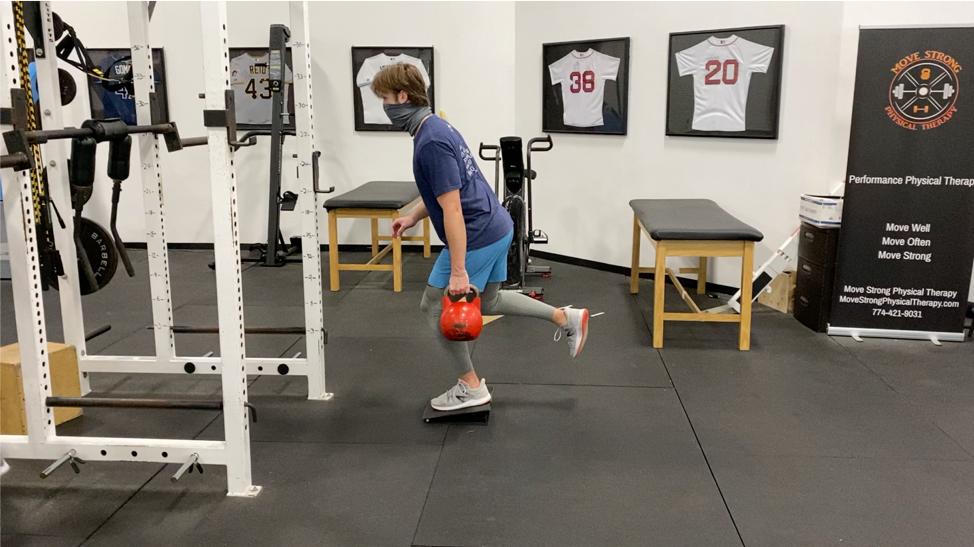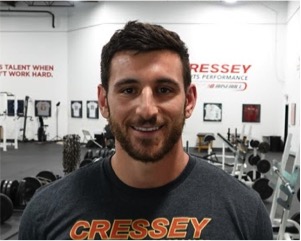
Assisted Lower Body Training
Today’s guest post comes from Cressey Sports Performance – Massachusetts coach Drew Cobin.
Hands Assisted lower body training is nothing new. To my knowledge, the Hatfield Squat was the first popularized exercise of this nature in the sports performance world. The Hatfield Squat is a Safety Squat Bar Squat with your hands assisting you by holding onto the squat rack. By holding onto the rack, we would increase stability because instead of having just two points of stability, there are now four points of stability: two feet & two hands (as long as the floor and rack are stable).
This concept leads to an interesting question to consider. Since strength and stability go hand and hand, can we use increased stability to increase loading potential?
Mike Boyle popularized the idea of doing unilateral lower training for sport specificity and decreased spine load. When doing unilateral training, we usually will work to decrease stability over time as a means of progression so that one leg is working harder. A sample progression would be going from a Squat to a Split Squat, and then to a Single Leg Squat. What’s interesting to me is that stability – rather than force production capabilities – often becomes the limiting factor when performing a Single Leg Squat, which results in limiting the external load. As mentioned before, stability and strength go hand-in-hand, so sometimes, if you can increase single leg strength via increased load, you will in turn increase single leg stability. The example here would be to do a single leg squat with hand assistance from a rack to increase points of stability, thereby increasing external loading capabilities, as shown below:
Using hand assistance appropriately in a training program can be great for unilateral strength and stability. So, when is it appropriate to use assistance in a program? And what are some examples of exercises that utilize this concept?
It’s important for strength and conditioning coaches to understand that most sports are played one leg. Usually, we see one leg on the ground while the other prepares to hit the ground, or we might see feet in different positions, serving the purpose of producing forces in certain directions. What we never really see, however, is an athlete using their hands for stability by holding an immovable object like a squat rack, although proper upper extremity action can aid in stability and movement efficiency. As such, it’s important to see using hand assistance for what it is: a training tool, used to increase stability and load, to get stronger and more stable to produce more force in the right direction without assistance.
How, then, can we use it? One of my favorite ways to use this is by performing what I like to call an Eccentric Overload. This is when you use more load on the lengthening phase of a resistance exercise than the shortening phase. An example would be using a heavier kettlebell than you can handle on an unassisted single leg squat (you can also use a dumbbell or safety squat bar). Here you would slowly lower in the single leg squat without assistance, then once you reach the bottom of your chosen range of motion, use the free hand for assistance from the rack. This works well because the hardest part of an exercise is the reversal of movement, and by using assistance here, we are able to train with a supramaximal load on the eccentric phase of the single leg squat. We are also able to get more braking forces if we want to, which come in the form of eccentric/isometric contractions in sports. After the downward phase in this exercise, we can have the athlete hit the brakes at the joint position that we want to work on for applying braking force prior to using hand assistance for reversal of motion.
Using hand assistance has no limits and can be used outside of just strength movements. We can also intelligently use it for plyometrics as well (once again to increase stability), and also overspeed exercises to improve conduction speed. You can use band assistance on jumps and sprints, or hand assistance on single leg hops. All these methods can work great for changing body positions, as well as ground contact times, and therefore their transfer to sport.
To recap, using hand assistance is one way to change to demands of a given exercise. As coaches, hand assistance is another tool in the toolbox, but it’s not the be-all, end-all. Hands assistance will increase load tolerance via increased stability. Manipulation of load and stability throughout an athlete’s training program is key to the program’s success. Going through periods of increased and decreased stability, load, and speed are key elements to an athletic development and rehabilitation programs.
Here’s a video to represent a programming progression going from assisted to unassisted and challenging stability/reactivity in plyometrics:
If you like these videos or want more ideas on this subject, follow @DrewCobin on Instagram for more. Enjoy!



